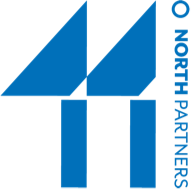Collaboration
1. Two minds are better than one – and good collaboration makes every task more fun. (We intuitively knew this, but these past eight years have been proof positive.)
2. Our decision, from Day One, to treat each other as trusted, 50/50 partners has delivered more benefits than ever imagined.
3. Staying connected to people you admire and respect buoys your spirits and sparks new ideas. Plus, they advocate for your business and may even become clients.
4. When you ask others for help, be specific. They are almost always willing to help when they know what you need.
5. Every networking opportunity provides something useful if you’re open to the possibilities.
6. Leadership doesn’t go away when you aren’t managing a team. There are plenty of opportunities to mentor and coach – and be mentored and coached – as consultants.
7. Engaging professionals you trust to fill in where you lack expertise allows you to focus on what you do best.
8. Showing gratitude to the people who help you grow your business – and paying it forward by helping others – makes work more fulfilling.
Performance
9. Even for small consultancies, purpose, values and strategy development is foundational; it was one of the first things we did.
10. For serial list-makers and box-checkers, nothing is more satisfying – or useful – than a well-organized business plan to guide day-to-day and long-term progress. (For a little added fun, we occasionally change font colors and formatting!)
11. Setting deadlines – even for the little things – is important; it encourages, motivates, and sometimes shames us to act and get shit done!
12. Knowing how we’re spending our time allows us to understand our productivity and how to estimate future work. (Tip: Toggl time-tracking software)
13. Remembering that clients are paying for our expertise, not just our time, helps us set the right fee structure.
14. Things always take longer than expected!
15. Designating “free days” and “buffer days” keeps us from making every day a “work” day.
16. The key to success is not self-promotion; it’s truly understanding the client’s need, so you can deliver the right solution.
17. Thinking about excellence as a mindset, rather than as an outcome, drives continuous improvement.
18. Good communication is fundamental to business success.
19. Inflexibility is a surefire way to lose business; adapting to every client’s expectations, environment and needs is consulting table stakes.
20. When you run your own business, you are the brand. No amount of marketing can gloss over character – or the quality of your products and services.
21. Marketing can present a cobbler’s children dilemma. Client needs come first. (i.e., why it’s taken us 8 years to publish our learnings!)
22. The excitement of signing a new client and diving into research and discovery never gets old.
23. On the flip side, working with clients over time builds trust and institutional knowledge that are mutually beneficial.
Resilience
24. Sometimes choosing the scariest path is exactly what you need to grow.
25. When you believe you can, you avoid the wasted time and energy of worrying you can’t.
26. By accepting that not every suggestion to a client will be a winner, you can keep offering ideas that are in their best interest.
27. Sometimes you just have to start a project, even when you’re fairly sure you have no idea what to do.
28. Being obsessively curious about your audience and owning your space and expertise can reduce anxiety in new situations. A coach with Broadway experience once told us, “Acting is not “acting,” it’s “authentic empowerment.”
29. People don’t always respond – or follow through. C’est la vie.
30. Knowing what clients think via periodic blind surveys helps us get better.
31. When client feedback isn’t glowing, we learn from it, and then focus on doing more of what earned us the feedback that was glowing.
32. Getting comfortable with things as they are will ultimately get uncomfortable.
33. Knowing that some days as a consultant are frustrating and boring, and others are energizing and productive is a solid reason to just roll with it and avoid unrealistic expectations.
Balance & Self-Care
34. Being in business for yourself means navigating the continuous yin and yang – strategy and execution, discipline and innovation, speed and quality, data and intuition, business development and client service.
35. Acting with urgency to demonstrate value goes hand in hand with being patient and gracious.
36. Consulting is inherently hybrid – we have come to love balancing home office time with client office time and coffee shop time.
37. Going for a walk or riding your bike can be work time, just as analyzing a client challenge can be fun.
38. Learning new sectors, industries and organizations is energizing – and a reminder that communication is essential in every environment.
39. Levity and laughter work wonders. Staying close to the ones who make us laugh is part of what has made eight years fly by!
40. When you sit at the computer without moving for too long, you might as well be smoking cigarettes. Motion is lotion for your joints.
41. Eliminating the 9-to-5 mindset and working when you’re most productive is a luxury of being self-employed … but it only works if you balance it with discipline.
42. Scheduling vacations and closing the virtual office around major holidays can be hard to do when revenue rests on your shoulders. But those shoulders need a break.
43. When there are only two people to do everything required for the business (and only one of them is good at math), there is a ton of variety – and a bit of tedium.
44. We all know what no one says on their death bed, so we’re mindful that career success is just one part of our total well-being.
We’re eagerly anticipating the next 44 lessons as we launch our 9th year as 44 Degrees North Partners!
